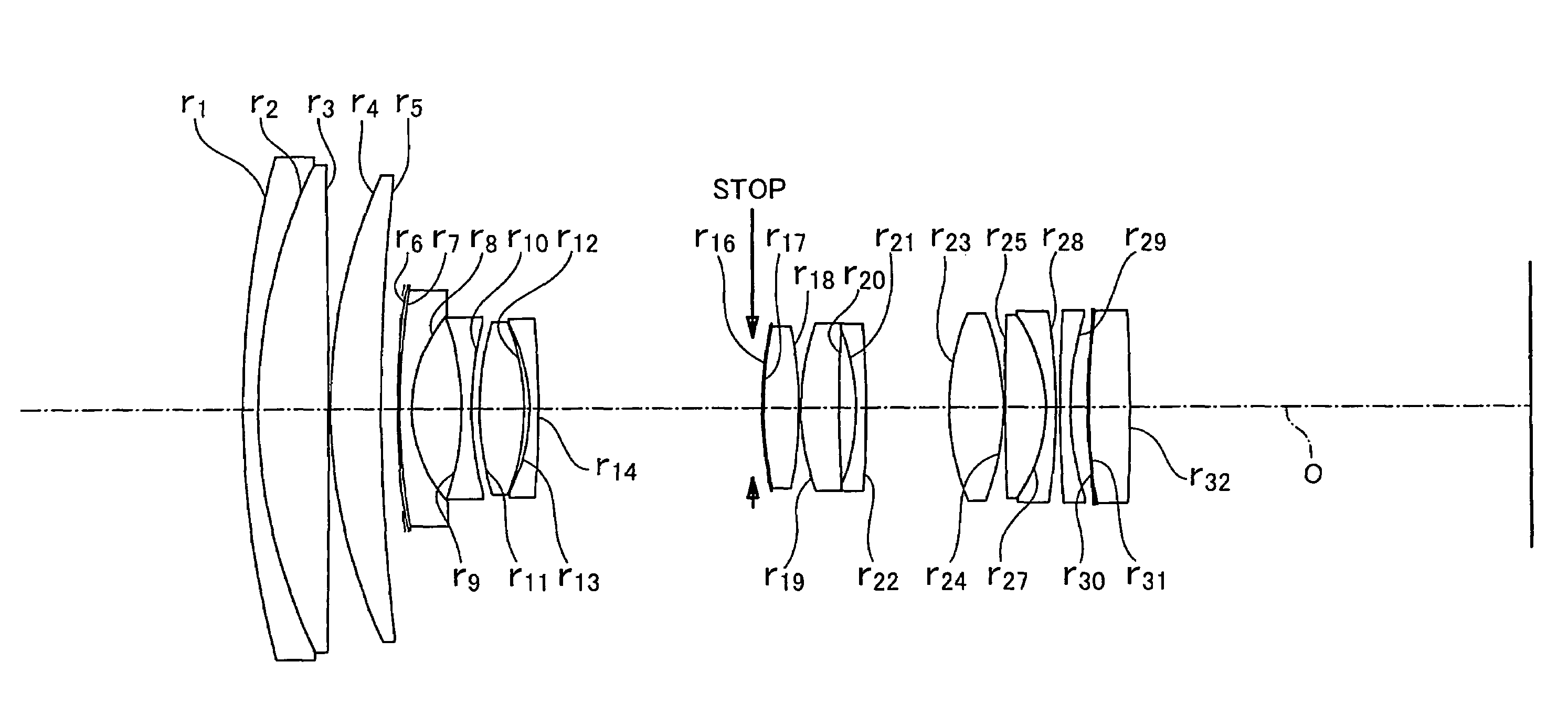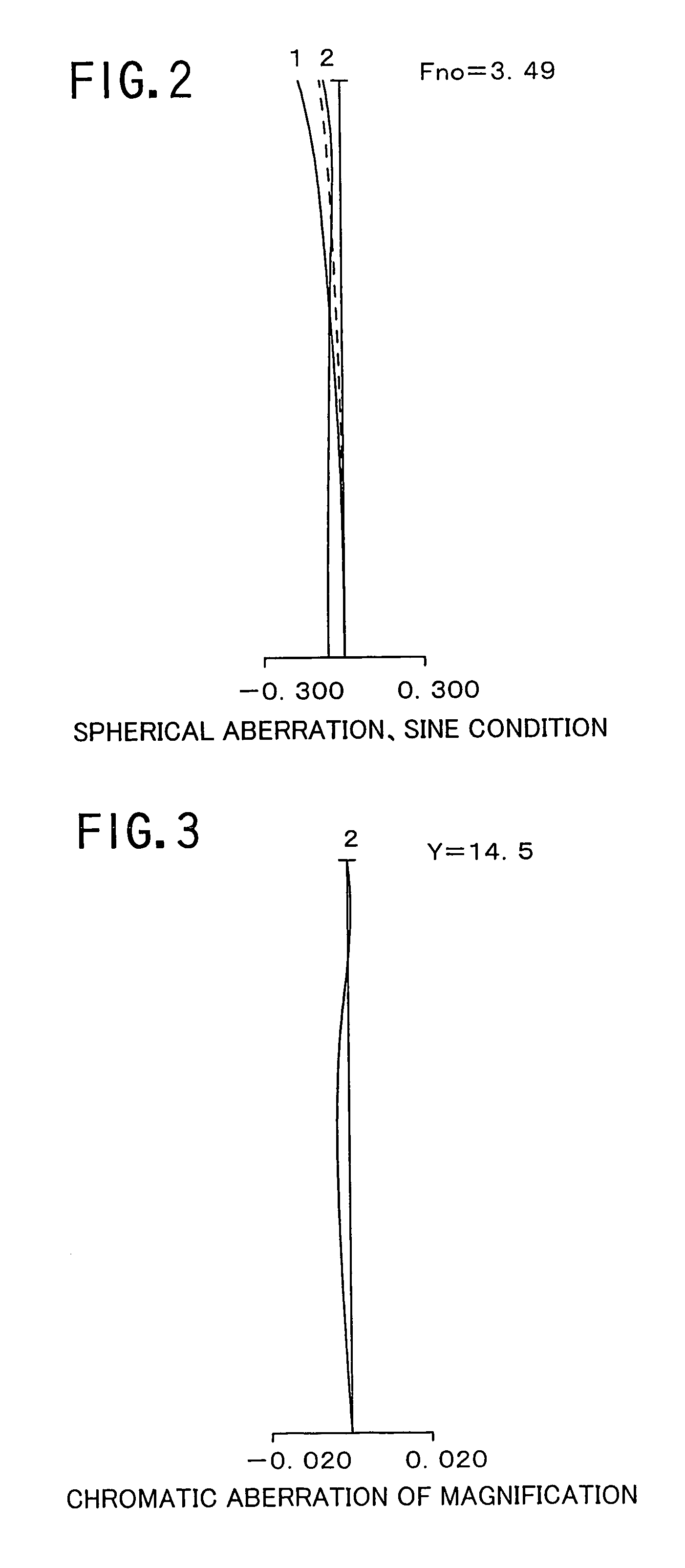High variable power zoom lens
a zoom lens, high-variable technology, applied in the direction of optics, instruments, optical elements, etc., can solve the problem of excessively small angle of view for the zoom lens to function as a wide-angle zoom lens
- Summary
- Abstract
- Description
- Claims
- Application Information
AI Technical Summary
Benefits of technology
Problems solved by technology
Method used
Image
Examples
embodiment 1
[0067]Various factors of a first preferred embodiment of a high variable power zoom lens according to the present invention will be provided. NS in the first column, R in the second column, D in the third, Nd in the fourth, and ν in the fifth respectively denote numbers of surfaces of the component lens in the order from the closest to the subject to the farthest therefrom, radii of curvature of the component lens pieces, intervals from one of the adjacent lens piece surfaces to the other, refractivities in terms of d-line (λ=587.6 nm), and Abbe numbers of the component lens pieces. STOP designates an aperture stop.[0068]Focal Length f=18.5˜50.3˜194.0[0069]F Number Fno=3.49˜4.85˜6.35[0070]Conditional Equation (1) |f2| / fW=0.662[0071]Conditional Equation (2) f3 / fW=3.468
[0072]The surfaces denoted by NS=r6, r16, and r31 are an aspherical surface of which surface geometry can be expressed in the following formula:
[0073]x=H2 / R1+1-(EP×H2 / R2)+A×H4+B×H6+C×H8+D×H10(11)
[0074]Surface Number NS(...
embodiment 2
[0085]Various factors of a second preferred embodiment of the high variable power zoom lens will be provided below. Since reference numerals and symbols are similar to those of the first preferred embodiment, descriptions of what are designated by the like symbols are omitted.[0086]Focal Length f=18.5˜50.3˜194.0[0087]F Number Fno=3.62˜5.03˜6.35[0088]Conditional Equation (1) |f2| / fW=0.674[0089]Conditional Equation (2) f3 / fW=2.432
[0090]The surfaces denoted by NS=r6, r16, and r31 are an aspherical surface of which surface geometry is similar to that expressed in the equation (11).
[0091]Surface Number NS(r), Radius of Curvature R, Surface Interval D, Refractivity Nd, and Abbe Number ν
[0092]
NSRDNdνr1115.68201.51.8466623.78r262.46057.51.49781.61r3−532.32340.2r457.41734.61.772549.6r5189.5960D (5) r6125.00000.21.514649.96r770.00001.21.88340.78r814.00005.2r9−28.992611.80446.58r1036.17410.8r1131.95544.61.8466623.78r12−25.72380.3785r13−20.255511.8348142.72r14−99.6449D (14)r15STOP0.9r1632.44680...
PUM
 Login to View More
Login to View More Abstract
Description
Claims
Application Information
 Login to View More
Login to View More - R&D
- Intellectual Property
- Life Sciences
- Materials
- Tech Scout
- Unparalleled Data Quality
- Higher Quality Content
- 60% Fewer Hallucinations
Browse by: Latest US Patents, China's latest patents, Technical Efficacy Thesaurus, Application Domain, Technology Topic, Popular Technical Reports.
© 2025 PatSnap. All rights reserved.Legal|Privacy policy|Modern Slavery Act Transparency Statement|Sitemap|About US| Contact US: help@patsnap.com



